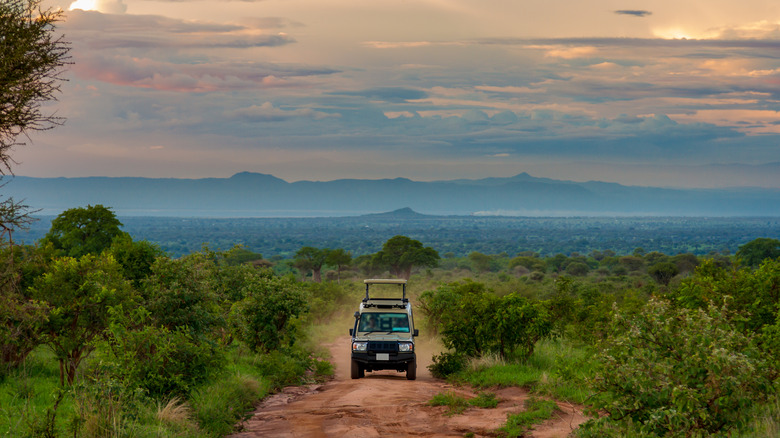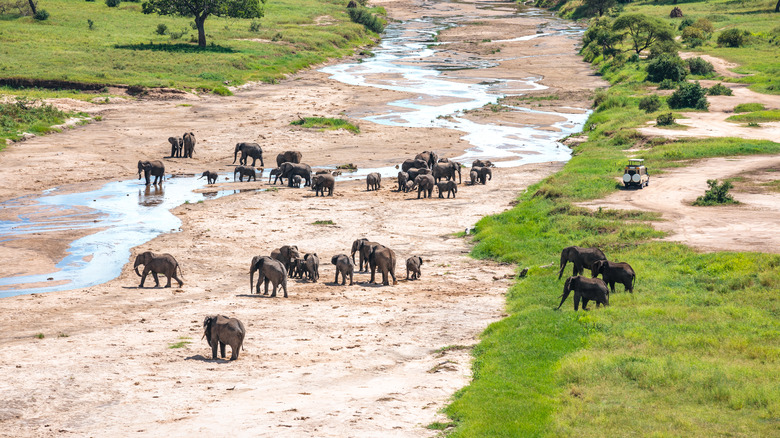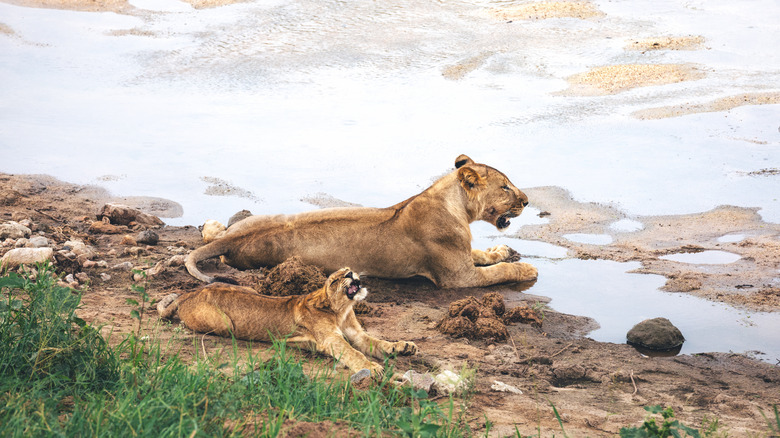Visit This National Park In East Africa For One-Of-A-Kind Wildlife Viewing Experiences
An African safari is on many people's bucket lists — and with the highest concentration of animals per square km in the world, Tanzania is the ideal place to do it. Located in the north of the country, Tarangire National Park is Tanzania's sixth largest national park, based around the Tarangire River which it is named after. The star of the show is the elephant, and herds of up to 300 travel to this part of the East African Rift Valley to drink, wash, and socialize.
These gatherings form the highest concentration of African elephants of any park in northern Tanzania, and watching them bathe in the river together is a unique experience. They are the biggest of the 'Big 5' game species, but lion, leopard, and buffalo can be found here too. While the rhino (which is the fifth of the lineup) is unlikely to be seen here, there are a wealth of other incredible creatures in Tarangire. There is even a migration of wildebeest, albeit smaller than the more famous species in the Serengeti. Safaris can be expensive outings, but they're unforgettable experiences.
How to visit Tarangire National Park
The entrance to Tarangire National Park is about two hours drive from Arusha in North Tanzania. Dar es Salaam is the best option for flying into Tanzania. From there, your safari operator can help you with onward travel or you can make your own way. The dry season runs from June to October, and it is the best time to spot big game as wildlife migrates to the Tarangire River to find water. During the rainy seasons, most of the larger wildlife goes elsewhere. From November to March is the wet season. While it isn't a good time for big game, it is great for birdwatching tours.
The park fees are more expensive for overseas visitors, costing $53 to $59 per adult for each day spent there. These fees are usually included in the price of your safari and your guide will pay them on your behalf. Night safaris are not permitted inside the park for safety reasons, so tours will generally be from 6:30 am to 6:30 pm. Your guide will be able to advise on safety while you're on a game drive. While it is possible to go for walks in the park, this should only be done when they say so.
What you will see in Tarangire National Park
Most of the wildlife will accumulate around the river, and it is here that you will come to find the wildebeest, zebra, buffalo, giraffe, and warthog — as well as the elephant. Lesser-known but equally incredible species (like the Bohor reedbuck, Coke's hartebeest, Thompson's gazelle, greater kudu, waterbuck, and lesser kudu) also gather here. Predators like lions, hyenas, and leopards usually watch their prey from a distance, with cheetahs and wild dogs being less common here.
Wildlife can be found in every part of the habitat as hippos ply the river while baboons, vervet monkeys, and even pythons swing from the trees. Over 500 bird species have been recorded in the park, so keep your binoculars handy for storks, hornbills, guinea fowl, eagles, parrots, vultures, bee-eaters, bustards, and lovebirds as you drive around. The landscape itself is iconic, lined as it is with the unofficial symbols of the African plains, the baobab, and acacia trees. Some species found in Tarangire National Park are endemic to Tanzania so they cannot be found anywhere else on earth — which may be the ultimate reason to go on safari here.


